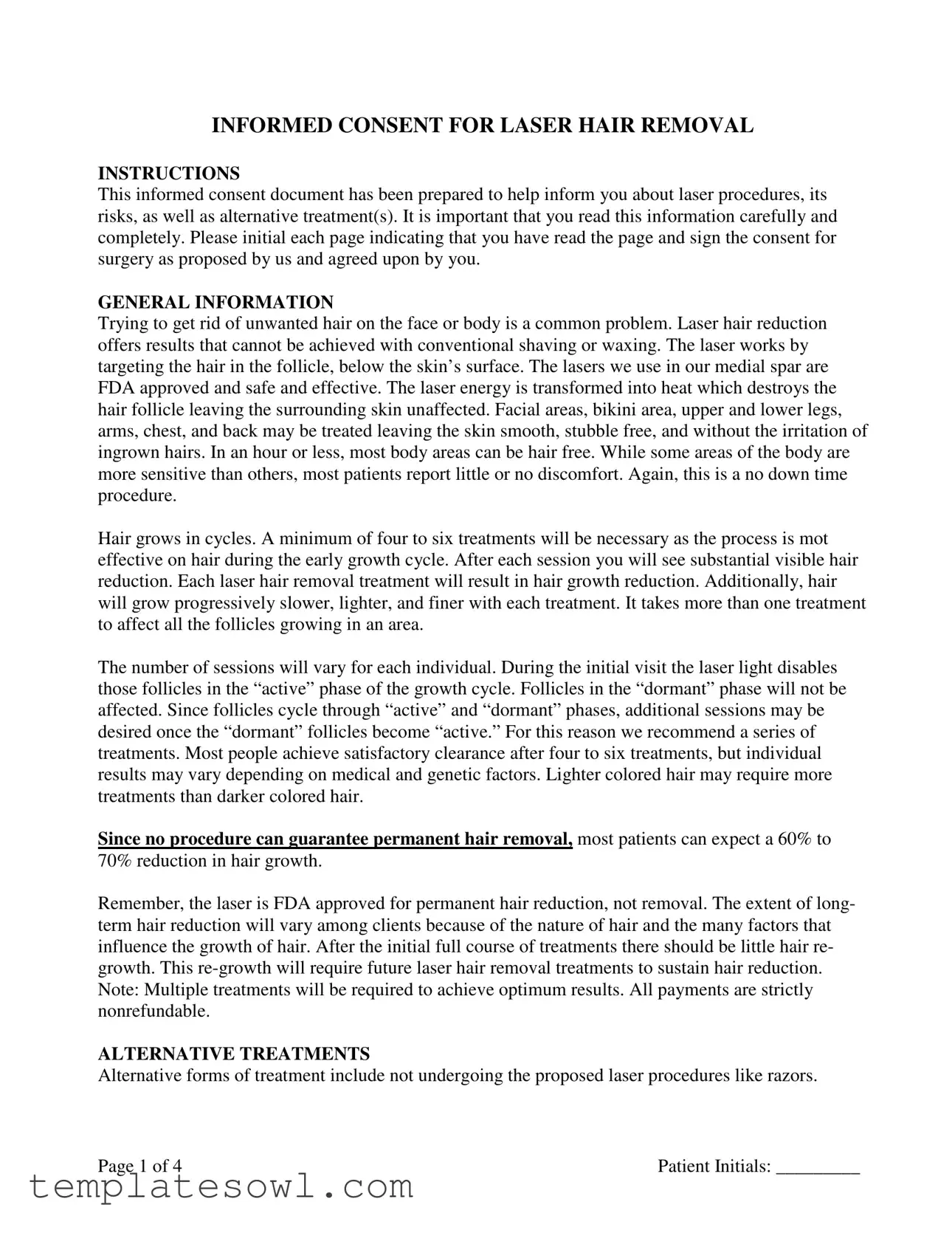What is the purpose of the Hair Removal Consent form?
The Hair Removal Consent form serves to inform patients about the laser hair removal procedure, including its benefits, risks, and alternative treatments. It ensures that patients are aware of what the procedure involves and has them acknowledge their understanding before proceeding. This consent is vital for the safety of both the patient and the medical providers.
How many treatments will I need for effective results?
Most individuals require a series of four to six treatments to achieve satisfactory hair reduction results. This is because hair grows in cycles, and laser treatments target hair during its active growth phase. The exact number of sessions necessary can vary from person to person, depending on individual factors such as hair type and growth cycles.
What are the potential risks associated with laser hair removal?
Like any medical procedure, laser hair removal carries certain risks. These may include burns, scarring, infection, and skin discoloration. Some individuals may experience mild pain after treatment. It is important to discuss these risks with your provider to fully understand the possible complications that might arise from the procedure.
How should I prepare for my laser hair removal appointment?
Prior to your treatment, it is essential to avoid tanning for 2-3 months. Additionally, refraining from waxing, tweezing, or using depilatory products for six weeks is necessary. Clean shaving the treatment area the night before is also recommended. It is advisable to wear loose, comfortable clothing on the day of treatment to reduce irritation.
What should I expect after the treatment?
Post-treatment, the treated area may appear red, similar to a sunburn, but this typically fades within a few days. It is best to avoid direct sun exposure for at least two weeks following treatment and to protect the area with a broad-spectrum sunscreen. Minor crusting may occur, but gentle washing and the application of an antibacterial ointment can help manage this.
Are the results of laser hair removal permanent?
While laser hair removal is termed as a permanent hair reduction method, it does not guarantee complete hair removal. Most patients can expect a 60% to 70% reduction in hair growth. Some hair regrowth may occur over time, necessitating additional treatments to maintain the reduced hair growth levels.
What should I do in case of complications after the procedure?
If you experience complications such as excessive pain, unusual redness, or signs of infection, it is important to reach out to your healthcare provider promptly. They may prescribe treatment such as antibiotics if needed or provide additional guidance to ensure proper healing.
What are the financial responsibilities associated with laser hair removal?
Patients should be aware that all payments for treatments are nonrefundable. By signing the consent form, patients acknowledge their understanding of the financial implications of the procedure, including costs for all subsequent treatments. Having a clear understanding of these responsibilities is crucial before proceeding with the treatment.
